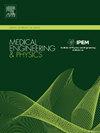Classification of acute myeloid leukemia by pre-trained deep neural networks: A comparison with different activation functions
IF 1.7
4区 医学
Q3 ENGINEERING, BIOMEDICAL
引用次数: 0
Abstract
Acute Myeloid Leukemia(AML) is a rapidly progressing cancer affecting blood and bone marrow, marked by the swift proliferation of abnormal myeloid cells. Effective treatment requires precise classification of AML subtypes. Conventional classification methods rely on manual microscopic analysis, which is time-consuming and variable, while traditional machine learning approaches often struggle with feature extraction and generalization. This underscores the need for automated detection methods which enhance this process by minimizing manual effort. Activation functions are critical in neural networks, introducing non-linearity that influences training convergence, computational efficiency, and model performance. This study evaluates the effectiveness of CNN architectures, Sequential (VGG16), Directed Acyclic Graph (InceptionV3), and Residual (ResNet50v2) in distinguishing between AML subtypes: AML without maturation, Acute Monoblastic Leukemia, and Pure Erythroid Leukemia, using peripheral blood smear images, while also investigating the impact of different activation functions on model accuracy and training time. The results show that ResNet50v2 achieves the shortest training time, while InceptionV3 takes the longest due to its complex architecture. GELU delivers the highest accuracy, reaching 94.02 % in InceptionV3 and 92.53 % in ResNet50v2, while SELU achieves the highest accuracy for VGG16 at 92.83 %. Mish provides competitive accuracy with lower training time than GELU, while Softplus and Softsign consistently perform poorly. This research demonstrates the potential of CNNs for automating AML subtype classification and identifies GELU as the most effective activation function. Future work could explore data augmentation, optimized activation functions, and attention mechanisms to improve classification performance.
预训练深度神经网络对急性髓系白血病的分类:不同激活函数的比较
急性髓系白血病(AML)是一种影响血液和骨髓的快速进展的癌症,其特征是异常髓系细胞迅速增殖。有效的治疗需要精确的AML亚型分类。传统的分类方法依赖于人工微观分析,这是耗时和可变的,而传统的机器学习方法往往在特征提取和泛化方面遇到困难。这强调了对自动化检测方法的需求,通过减少人工工作来增强这一过程。激活函数在神经网络中是至关重要的,它引入了影响训练收敛性、计算效率和模型性能的非线性。本研究评估了CNN架构、序列(VGG16)、有向无环图(InceptionV3)和残差(ResNet50v2)在区分AML亚型(未成熟AML、急性单核细胞白血病和纯红细胞白血病)方面的有效性,使用外周血片图像,同时研究了不同激活函数对模型准确性和训练时间的影响。结果表明,ResNet50v2的训练时间最短,而InceptionV3由于其复杂的架构,训练时间最长。GELU的准确率最高,在InceptionV3中达到94.02%,在ResNet50v2中达到92.53%,而在VGG16中,SELU的准确率最高,为92.83%。Mish以比GELU更短的训练时间提供了具有竞争力的准确性,而Softplus和Softsign一直表现不佳。这项研究证明了cnn在自动AML亚型分类方面的潜力,并确定GELU是最有效的激活函数。未来的工作可以探索数据增强、优化激活函数和注意机制来提高分类性能。
本文章由计算机程序翻译,如有差异,请以英文原文为准。
求助全文
约1分钟内获得全文
求助全文
来源期刊

Medical Engineering & Physics
工程技术-工程:生物医学
CiteScore
4.30
自引率
4.50%
发文量
172
审稿时长
3.0 months
期刊介绍:
Medical Engineering & Physics provides a forum for the publication of the latest developments in biomedical engineering, and reflects the essential multidisciplinary nature of the subject. The journal publishes in-depth critical reviews, scientific papers and technical notes. Our focus encompasses the application of the basic principles of physics and engineering to the development of medical devices and technology, with the ultimate aim of producing improvements in the quality of health care.Topics covered include biomechanics, biomaterials, mechanobiology, rehabilitation engineering, biomedical signal processing and medical device development. Medical Engineering & Physics aims to keep both engineers and clinicians abreast of the latest applications of technology to health care.
 求助内容:
求助内容: 应助结果提醒方式:
应助结果提醒方式:


